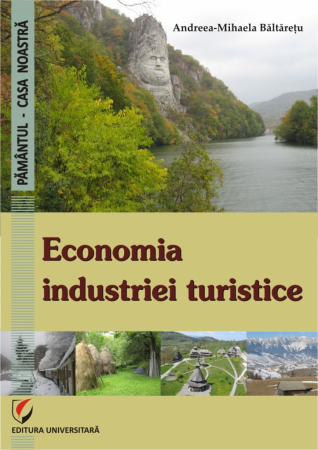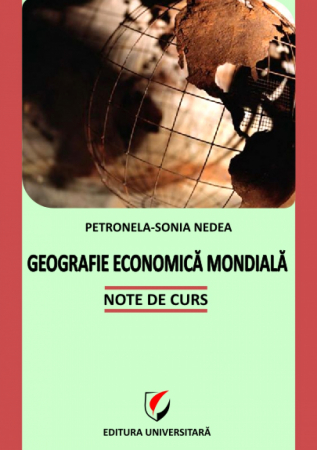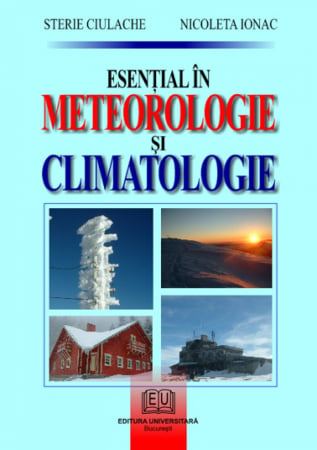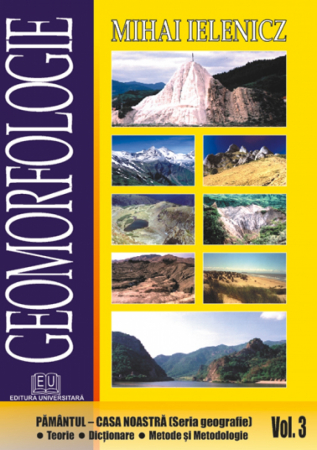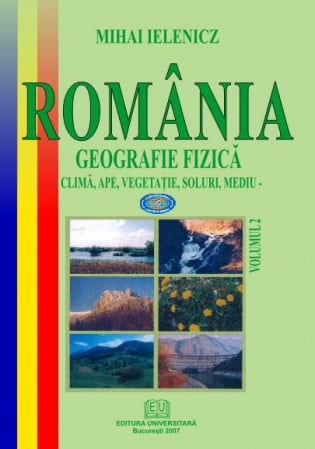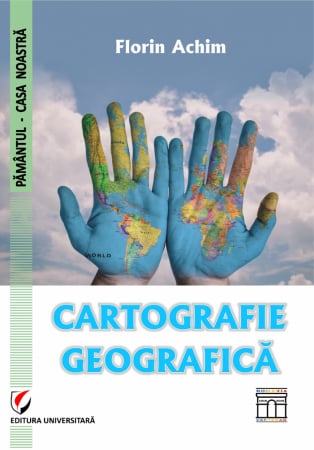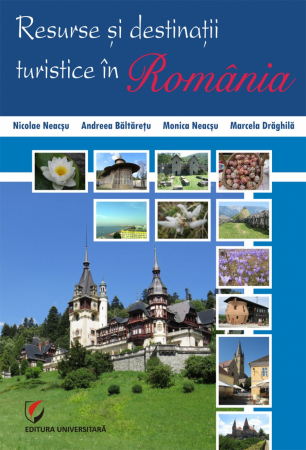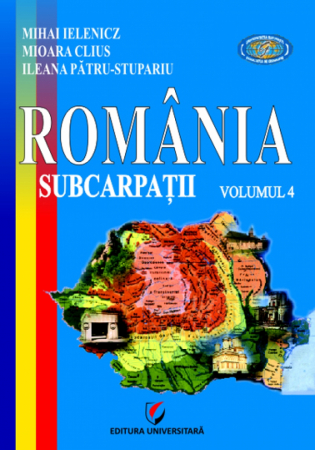Manuscript proposals: [email protected] / 0745 204 115 //// Tracking orders Individuals / Sales: 0745 200 357 / Orders Legal entities: 0721 722 783
6359.png) Research on the impact of accession to the European Union on the evolution of agricultural holdings in our country
Research on the impact of accession to the European Union on the evolution of agricultural holdings in our country
6359.png)
ISBN: 978-606-28-1058-0
DOI: 10.5682/9786062810580
Publisher year: 2020
Edition: I
Pages: 216
Publisher: Editura Universitară
Author: Aurelian Buliga
Product Code:
9786062810580
Do you need help?
0745 200 357
- Description
- Download (1)
- Authors
- Content
- More details
- Reviews (0)
Expectations from agriculture, after 1989, were multiple. From a centralized agriculture that was export-oriented to pay the sums needed for investments in the national economy, the population expected the development of an agriculture that could meet the internal requirements of the population of agri-food products. The structural changes that took place, especially through the restitution of agricultural areas, to which they belonged before collectivization (Law 18/1991), but also through the destruction of factories in the processing industry, stables, irrigation systems, network of the internal and external market, of the Agricultural Bank, etc., have made that, since 2000, the entire animal husbandry and processing industry of agricultural production to reach ruin.
The study aimed to analyze the impact of accession - through investments that have been and are made in agriculture, through the experience of agricultural developed countries - on the organization of production and work, on production and economic results, on the standard of living the peasant.
In the last 20 years, Romanian agriculture has benefited from three programs: SAPARD Program, in the period 2000-2006, amounting to 1,417,827,412 euros, with a number of 4931 projects; PNDR, in the period 2006-2013, amounting to 7,034,337,440 euros with a number of 95,993 projects and PNDR, in the period 2014-2020, amounting to 8,127,996,402 euros.
The objectives of these programs were generous for measures to develop agriculture and to increase the living standards of the peasants. Thus, the National Rural Development Program (PNDR) 2007-2013 is a program that respected the strategic rural development lines of the European Union and which, first of all, aimed to improve the balance between economic development and sustainable use of natural resources. , maintaining and increasing the attractiveness of rural areas - these being basic elements in diversifying economic activities (Glogovetan, 2014). Sustainable, viable or sustainable economic development is a way of economic development in which there is the objective that, by satisfying the present consumption requirements, not to prejudice or compromise the requirements of future generations (Mocanu, 2015).
The study aimed to analyze the impact of accession - through investments that have been and are made in agriculture, through the experience of agricultural developed countries - on the organization of production and work, on production and economic results, on the standard of living the peasant.
In the last 20 years, Romanian agriculture has benefited from three programs: SAPARD Program, in the period 2000-2006, amounting to 1,417,827,412 euros, with a number of 4931 projects; PNDR, in the period 2006-2013, amounting to 7,034,337,440 euros with a number of 95,993 projects and PNDR, in the period 2014-2020, amounting to 8,127,996,402 euros.
The objectives of these programs were generous for measures to develop agriculture and to increase the living standards of the peasants. Thus, the National Rural Development Program (PNDR) 2007-2013 is a program that respected the strategic rural development lines of the European Union and which, first of all, aimed to improve the balance between economic development and sustainable use of natural resources. , maintaining and increasing the attractiveness of rural areas - these being basic elements in diversifying economic activities (Glogovetan, 2014). Sustainable, viable or sustainable economic development is a way of economic development in which there is the objective that, by satisfying the present consumption requirements, not to prejudice or compromise the requirements of future generations (Mocanu, 2015).
-
Cercetări privind impactul aderării la Uniunea Europeană asupra evoluției exploatațiilor agricole din țara noastră
Download
AURELIAN BULIGA
INTRODUCTION / 9
Part I: BIBLIOGRAPHY STUDY / 11
CHAPTER I. ANALYSIS OF THE EVOLUTION OF AGRICULTURAL HOLDINGS AT THE LEVEL OF THE EUROPEAN UNION / 12
1.1. Basic principles and particularities of the EU policy on agricultural holdings in the context of rural development / 12
1.2. Achievements of the CAP and the impact on European agricultural holdings / 13
1.2.1. Evolution of the size of agricultural holdings / 14
1.2.2. Analysis of the labor force in agriculture of the European Union / 15
1.2.3. Analysis of some indicators of agriculture of the European Union / 16
1.3. The future of the Community agricultural policy / 18
CHAPTER II. STATE OF RESEARCH ON THE IMPACT OF EUROPEAN FUNDS ON AGRICULTURAL HOLDINGS / 20
2.1. State of research on the impact of European funds on agricultural holdings / 21
2.2. Indicators for assessing the impact of European funds on agricultural holdings / 23
2.2.1. Concepts regarding the impact analysis of European funds on agricultural holdings / 24
2.2.2. Statistical indicators for analyzing the impact of European funds on agricultural holdings / 25
2.3. Questionnaire method for analyzing the impact of European funds on agricultural holdings / 26
2.3.1. Brief presentation of the areas subject to research / 26
2.3.2. Questionnaire in the analysis of the impact of European funds on the development of agricultural holdings / 35
2.3.3. Analysis and characterization of the respondents according to the geographical area and the level of training / 38
Part II: OWN RESEARCH / 41
CHAPTER III. ANALYSIS OF THE IMPACT OF ACCESSION TO THE EUROPEAN UNION ON THE EVOLUTION OF AGRICULTURAL HOLDINGS AT THE LEVEL OF THE SOUTH-WEST DEVELOPMENT REGION OLTENIA / 43
3.1. Brief general presentation of the South-West Oltenia region and Olt county / 43
3.1.1. Brief presentation of the natural conditions in the South-West Region of Oltenia / 44
3.1.2. Labor force analysis from the South-West Oltenia Region / 46
3.1.3. Identifying the main problems in carrying out activities in farms / 47
3.2. Perception on the methodology and information sources in submitting and winning projects / 49
3.2.1. Identifying sources of information in submitting and winning projects / 49
3.2.2. Evaluation of opinions regarding the management of financing programs and their social influences / 50
3.2.3. Evaluation of the submission and development of European projects / 56
3.3. The impact of the funds attracted by the South-West Oltenia Development Region on the development of the vegetal and animal agricultural production / 57
3.3.1. The need for the European Union to provide funds for the modernization of agricultural holdings / 58
3.3.2. Conditions for granting funds for farmers in our country for the modernization of agricultural holdings / 58
3.3.3. Indicators that characterize the vegetal production from the South-West Oltenia Development Region / 63
3.3.4. Indicators that characterize animal production in the South-West Oltenia Development Region / 65
3.4. Perception regarding the impact of modernization projects of agricultural holdings on the logistical management of holdings / 70
3.4.1. Analysis of the activity of supplying the holdings and marketing the production according to the exploited surface / 70
3.4.2. Analysis of the activity of supply of exploitations and commercialization of the production according to the profile of the farm / 73
3.4.3. Analysis of the activity of supply of exploitations and commercialization of the production according to the geographical area / 75
3.4.4. Analysis of the degree of association with other agricultural producers / 78
3.5. The impact of the funds attracted by the South-West Oltenia Development Region on the installation of young farmers / 81
3.5.1. The need for the European Union to provide funds for the installation of young farmers / 81
3.5.2. Necessary conditions for granting funds for the installation of young farmers / 82
3.5.3. Indicators that characterize the installation of young farmers / 84
3.6. The impact of the funds attracted by the South-West Oltenia Development Region for environmental protection / 85
3.6.1. The need for funding by the European Union for environmental protection / 85
3.6.2. Necessary conditions for granting funds for environmental protection / 86
3.6.3. Indicators that characterize the environmental protection in our country and in some European countries / 87
3.7. Perception regarding the impact of the financed projects on the improvement of the environmental conditions / 91
CHAPTER IV. ANALYSIS OF THE IMPACT OF FUNDS ATTRACTED BY OUR COUNTRY AND THE SOUTH-WEST OLTENIA DEVELOPMENT REGION ON THE TECHNICAL-ECONOMIC AND SOCIAL RESULTS OF AGRICULTURE AND RURAL DEVELOPMENT / 94
4.1. The main indicators that characterize the development of agriculture in the South-West Oltenia Development Region, in our country and in some European countries / 94
4.1. 1. Impact on the structure of agricultural holdings / 95
4.1.2. Impact on average yields in main crops / 96
4.1.3. The value of total productions and per hectare / 100
4.1.4. Impact on trade in agri - food products / 101
4.2. Perception regarding the impact of the financed projects on the improvement of the activities from the agricultural exploitations / 102
4.2.1. The impact of the financed projects in the increase of the technical, qualitative indicators and on the productivity of the exploitations / 103
4.2.2. The impact of the financed projects on the labor force, depending on the geographical area / 105
4.2.3. Impact of financed projects on the labor force, depending on the agricultural area of the holding / 108
4.2.4. The impact of the financed projects on the labor force, depending on the profile of the farm / 110
4.2.5. Impact of funded projects on improving living standards / 112
4.2.6. Impact of financed projects on economic indicators / 113
4.2.7. Analysis of the impact on the degree of satisfaction of the activity performed / 116
4.2.8. Identifying the main problems in carrying out the activities in the holdings and testing the connections between the identified problems and the exploited surface / 122
4.2.9. Identifying the main problems in carrying out the activities in the holdings and testing the connections between the identified problems and the holding profile / 124
4.3. Common agricultural policies for the development of agriculture and rural areas / 126
4.3.1. Labor productivity analysis / 127
4.3.2. Analysis of the degree of urbanization / 128
4.3.3. Living standards indicators / 129
4.4. Perception regarding the development of agricultural exploitations and of rural areas / 131
4.4.1. Perspectives for agricultural development / 131
4.4.2. Rural development perspectives / 136
CHAPTER V. CONCLUSIONS AND PROPOSALS / 141
BIBLIOGRAPHY / 150
ANNEXES / 156
LIST OF TABLES / 156
LIST OF FIGURES / 161
LIST OF ACRONYMS / ABBREVIATIONS / 162
DETAILED TABLES / 163
Part I: BIBLIOGRAPHY STUDY / 11
CHAPTER I. ANALYSIS OF THE EVOLUTION OF AGRICULTURAL HOLDINGS AT THE LEVEL OF THE EUROPEAN UNION / 12
1.1. Basic principles and particularities of the EU policy on agricultural holdings in the context of rural development / 12
1.2. Achievements of the CAP and the impact on European agricultural holdings / 13
1.2.1. Evolution of the size of agricultural holdings / 14
1.2.2. Analysis of the labor force in agriculture of the European Union / 15
1.2.3. Analysis of some indicators of agriculture of the European Union / 16
1.3. The future of the Community agricultural policy / 18
CHAPTER II. STATE OF RESEARCH ON THE IMPACT OF EUROPEAN FUNDS ON AGRICULTURAL HOLDINGS / 20
2.1. State of research on the impact of European funds on agricultural holdings / 21
2.2. Indicators for assessing the impact of European funds on agricultural holdings / 23
2.2.1. Concepts regarding the impact analysis of European funds on agricultural holdings / 24
2.2.2. Statistical indicators for analyzing the impact of European funds on agricultural holdings / 25
2.3. Questionnaire method for analyzing the impact of European funds on agricultural holdings / 26
2.3.1. Brief presentation of the areas subject to research / 26
2.3.2. Questionnaire in the analysis of the impact of European funds on the development of agricultural holdings / 35
2.3.3. Analysis and characterization of the respondents according to the geographical area and the level of training / 38
Part II: OWN RESEARCH / 41
CHAPTER III. ANALYSIS OF THE IMPACT OF ACCESSION TO THE EUROPEAN UNION ON THE EVOLUTION OF AGRICULTURAL HOLDINGS AT THE LEVEL OF THE SOUTH-WEST DEVELOPMENT REGION OLTENIA / 43
3.1. Brief general presentation of the South-West Oltenia region and Olt county / 43
3.1.1. Brief presentation of the natural conditions in the South-West Region of Oltenia / 44
3.1.2. Labor force analysis from the South-West Oltenia Region / 46
3.1.3. Identifying the main problems in carrying out activities in farms / 47
3.2. Perception on the methodology and information sources in submitting and winning projects / 49
3.2.1. Identifying sources of information in submitting and winning projects / 49
3.2.2. Evaluation of opinions regarding the management of financing programs and their social influences / 50
3.2.3. Evaluation of the submission and development of European projects / 56
3.3. The impact of the funds attracted by the South-West Oltenia Development Region on the development of the vegetal and animal agricultural production / 57
3.3.1. The need for the European Union to provide funds for the modernization of agricultural holdings / 58
3.3.2. Conditions for granting funds for farmers in our country for the modernization of agricultural holdings / 58
3.3.3. Indicators that characterize the vegetal production from the South-West Oltenia Development Region / 63
3.3.4. Indicators that characterize animal production in the South-West Oltenia Development Region / 65
3.4. Perception regarding the impact of modernization projects of agricultural holdings on the logistical management of holdings / 70
3.4.1. Analysis of the activity of supplying the holdings and marketing the production according to the exploited surface / 70
3.4.2. Analysis of the activity of supply of exploitations and commercialization of the production according to the profile of the farm / 73
3.4.3. Analysis of the activity of supply of exploitations and commercialization of the production according to the geographical area / 75
3.4.4. Analysis of the degree of association with other agricultural producers / 78
3.5. The impact of the funds attracted by the South-West Oltenia Development Region on the installation of young farmers / 81
3.5.1. The need for the European Union to provide funds for the installation of young farmers / 81
3.5.2. Necessary conditions for granting funds for the installation of young farmers / 82
3.5.3. Indicators that characterize the installation of young farmers / 84
3.6. The impact of the funds attracted by the South-West Oltenia Development Region for environmental protection / 85
3.6.1. The need for funding by the European Union for environmental protection / 85
3.6.2. Necessary conditions for granting funds for environmental protection / 86
3.6.3. Indicators that characterize the environmental protection in our country and in some European countries / 87
3.7. Perception regarding the impact of the financed projects on the improvement of the environmental conditions / 91
CHAPTER IV. ANALYSIS OF THE IMPACT OF FUNDS ATTRACTED BY OUR COUNTRY AND THE SOUTH-WEST OLTENIA DEVELOPMENT REGION ON THE TECHNICAL-ECONOMIC AND SOCIAL RESULTS OF AGRICULTURE AND RURAL DEVELOPMENT / 94
4.1. The main indicators that characterize the development of agriculture in the South-West Oltenia Development Region, in our country and in some European countries / 94
4.1. 1. Impact on the structure of agricultural holdings / 95
4.1.2. Impact on average yields in main crops / 96
4.1.3. The value of total productions and per hectare / 100
4.1.4. Impact on trade in agri - food products / 101
4.2. Perception regarding the impact of the financed projects on the improvement of the activities from the agricultural exploitations / 102
4.2.1. The impact of the financed projects in the increase of the technical, qualitative indicators and on the productivity of the exploitations / 103
4.2.2. The impact of the financed projects on the labor force, depending on the geographical area / 105
4.2.3. Impact of financed projects on the labor force, depending on the agricultural area of the holding / 108
4.2.4. The impact of the financed projects on the labor force, depending on the profile of the farm / 110
4.2.5. Impact of funded projects on improving living standards / 112
4.2.6. Impact of financed projects on economic indicators / 113
4.2.7. Analysis of the impact on the degree of satisfaction of the activity performed / 116
4.2.8. Identifying the main problems in carrying out the activities in the holdings and testing the connections between the identified problems and the exploited surface / 122
4.2.9. Identifying the main problems in carrying out the activities in the holdings and testing the connections between the identified problems and the holding profile / 124
4.3. Common agricultural policies for the development of agriculture and rural areas / 126
4.3.1. Labor productivity analysis / 127
4.3.2. Analysis of the degree of urbanization / 128
4.3.3. Living standards indicators / 129
4.4. Perception regarding the development of agricultural exploitations and of rural areas / 131
4.4.1. Perspectives for agricultural development / 131
4.4.2. Rural development perspectives / 136
CHAPTER V. CONCLUSIONS AND PROPOSALS / 141
BIBLIOGRAPHY / 150
ANNEXES / 156
LIST OF TABLES / 156
LIST OF FIGURES / 161
LIST OF ACRONYMS / ABBREVIATIONS / 162
DETAILED TABLES / 163
Expectations from agriculture, after 1989, were multiple. From a centralized agriculture that was export-oriented to pay the sums needed for investments in the national economy, the population expected the development of an agriculture that could meet the internal requirements of the population of agri-food products. The structural changes that took place, especially through the restitution of agricultural areas, to which they belonged before collectivization (Law 18/1991), but also through the destruction of factories in the processing industry, stables, irrigation systems, network of the internal and external market, of the Agricultural Bank, etc., have made that, since 2000, the entire animal husbandry and processing industry of agricultural production to reach ruin.
The study aimed to analyze the impact of accession - through investments that have been and are made in agriculture, through the experience of agricultural developed countries - on the organization of production and work, on production and economic results, on the standard of living the peasant.
In the last 20 years, Romanian agriculture has benefited from three programs: SAPARD Program, in the period 2000-2006, amounting to 1,417,827,412 euros, with a number of 4931 projects; PNDR, in the period 2006-2013, amounting to 7,034,337,440 euros with a number of 95,993 projects and PNDR, in the period 2014-2020, amounting to 8,127,996,402 euros.
The objectives of these programs were generous for measures to develop agriculture and to increase the living standards of the peasants. Thus, the National Rural Development Program (PNDR) 2007-2013 is a program that respected the strategic rural development lines of the European Union and which, first of all, aimed to improve the balance between economic development and sustainable use of natural resources. , maintaining and increasing the attractiveness of rural areas - these being basic elements in diversifying economic activities (Glogovetan, 2014). Sustainable, viable or sustainable economic development is a way of economic development in which there is the objective that, by satisfying the present consumption requirements, not to prejudice or compromise the requirements of future generations (Mocanu, 2015).
Although these goals were generous, their achievement was far from the established levels. Apart from the increase in the level of average productions for field crops, the other sectors could not recover but, on the contrary, their degradation continued, such as: the decrease of livestock; decreasing the areas of fruit trees and vines, vegetable greenhouses; closure or complete destruction of slaughterhouses, canneries, sugar factories; destruction of tractor and agricultural machinery factories; migration of rural youth in Western Europe; aging of the rural population; increase in exports of primary agricultural products and imports of processed agri-food products; alienation of agricultural land. It is considered that the main reason for the failure of the objectives proposed by the Programs was the poor absorption of Union money, both for the structural funds programs and for the funds from agriculture. During the programming period, they are based on the lack of development vision, a poor quality of projects and excessive bureaucracy (Lucian, 2015).
For these programs, impact studies highlight the positive effect of investments on revitalizing rural areas (labor market) by creating / maintaining new jobs, but also the fact that the SAPARD Program alone failed to stop migration from rural areas - which decreased in seven years (2002-2009) with about 5.2% of the population - but it helped to limit this phenomenon (Ecosphere, 2011).
At the end of the introduction I would like to thank my wife and children, Alexandru and Cosmina, who were deprived of some of the time they deserved, in order to prepare this paper.
The Author
The study aimed to analyze the impact of accession - through investments that have been and are made in agriculture, through the experience of agricultural developed countries - on the organization of production and work, on production and economic results, on the standard of living the peasant.
In the last 20 years, Romanian agriculture has benefited from three programs: SAPARD Program, in the period 2000-2006, amounting to 1,417,827,412 euros, with a number of 4931 projects; PNDR, in the period 2006-2013, amounting to 7,034,337,440 euros with a number of 95,993 projects and PNDR, in the period 2014-2020, amounting to 8,127,996,402 euros.
The objectives of these programs were generous for measures to develop agriculture and to increase the living standards of the peasants. Thus, the National Rural Development Program (PNDR) 2007-2013 is a program that respected the strategic rural development lines of the European Union and which, first of all, aimed to improve the balance between economic development and sustainable use of natural resources. , maintaining and increasing the attractiveness of rural areas - these being basic elements in diversifying economic activities (Glogovetan, 2014). Sustainable, viable or sustainable economic development is a way of economic development in which there is the objective that, by satisfying the present consumption requirements, not to prejudice or compromise the requirements of future generations (Mocanu, 2015).
Although these goals were generous, their achievement was far from the established levels. Apart from the increase in the level of average productions for field crops, the other sectors could not recover but, on the contrary, their degradation continued, such as: the decrease of livestock; decreasing the areas of fruit trees and vines, vegetable greenhouses; closure or complete destruction of slaughterhouses, canneries, sugar factories; destruction of tractor and agricultural machinery factories; migration of rural youth in Western Europe; aging of the rural population; increase in exports of primary agricultural products and imports of processed agri-food products; alienation of agricultural land. It is considered that the main reason for the failure of the objectives proposed by the Programs was the poor absorption of Union money, both for the structural funds programs and for the funds from agriculture. During the programming period, they are based on the lack of development vision, a poor quality of projects and excessive bureaucracy (Lucian, 2015).
For these programs, impact studies highlight the positive effect of investments on revitalizing rural areas (labor market) by creating / maintaining new jobs, but also the fact that the SAPARD Program alone failed to stop migration from rural areas - which decreased in seven years (2002-2009) with about 5.2% of the population - but it helped to limit this phenomenon (Ecosphere, 2011).
At the end of the introduction I would like to thank my wife and children, Alexandru and Cosmina, who were deprived of some of the time they deserved, in order to prepare this paper.
The Author
If you want to express your opinion about this product you can add a review.
write a review

![Research on the impact of accession to the European Union on the evolution of agricultural holdings in our country [1] Research on the impact of accession to the European Union on the evolution of agricultural holdings in our country [1]](https://gomagcdn.ro/domains/editurauniversitara.ro/files/product/large/cercetri-privind-impactul-aderrii-la-uniunea-european-asupra-evoluiei-exploataiilor-agricole-din-ara-noastr-5-885131.jpg)

